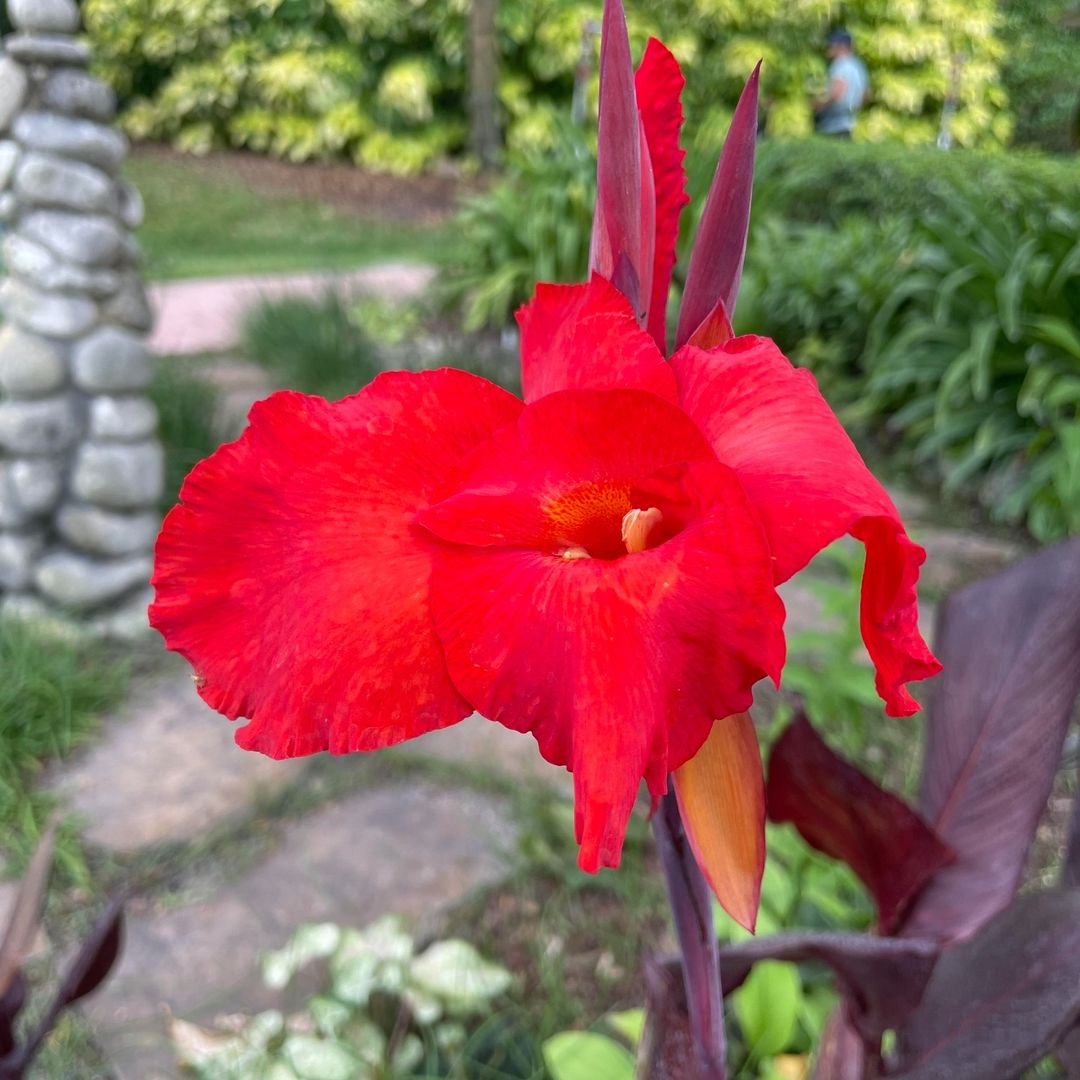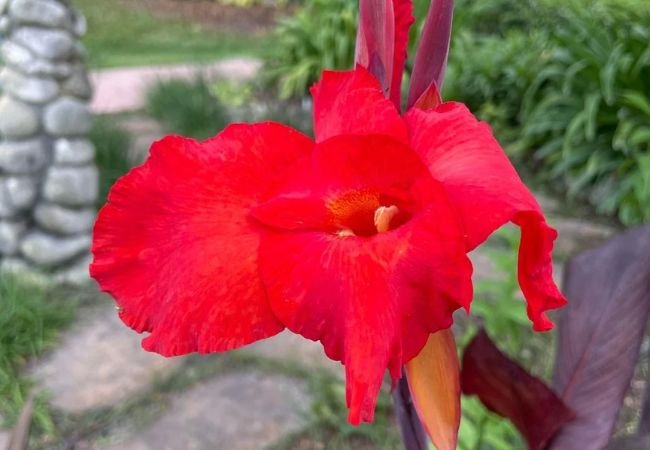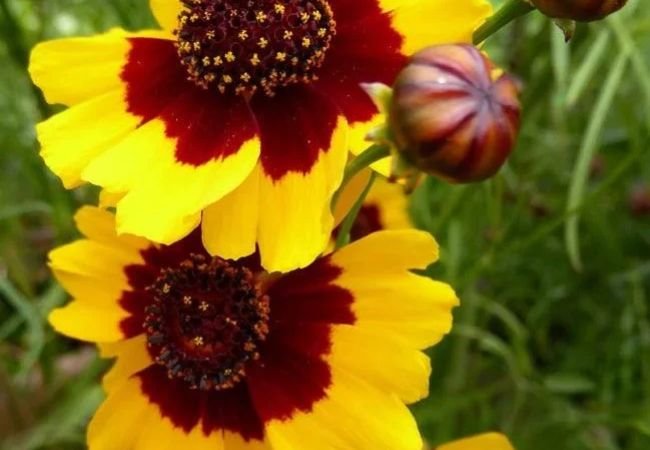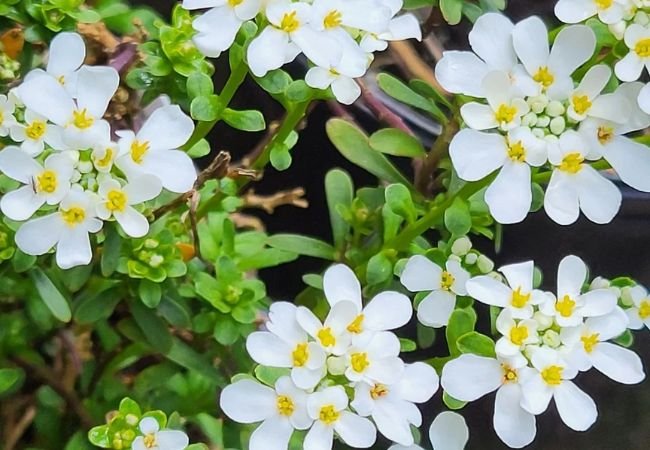Discover how to grow beautiful Canna Lilies in your garden. This guide covers planting, care, and problem-solving tips for these colorful, tropical-looking flowers that are perfect for USA gardens.
Have you ever seen a flower that looks like it came straight out of a tropical paradise? That’s the Canna Lilies for you! These big, bright flowers can make any garden look amazing. Let’s talk about how you can grow them in your own backyard.
Sure! Here’s a chart with information about the Canna Lily:
| Aspect | Details |
|---|---|
| Botanical Name | Canna spp. |
| Common Name | Canna Lily |
| Plant Type | Perennial |
| Hardiness Zone | Zones 7-10 |
| Sun Exposure | Full sun |
| Soil Type | Well-drained, rich, moist soil |
| Watering Needs | Regular watering, keep soil moist |
| Growth Habit | Upright, clumping |
| Height/Spread | 1.5-8 feet tall / 1-4 feet spread |
| Special Features | Showy flowers, large tropical foliage, attracts hummingbirds, deer resistant |
What Are Canna Lilies?

Canna Lilies aren’t actually lilies at all. They’re part of their own plant family called Cannaceae. These flowers come in many colors like red, orange, yellow and pink. They have large leaves that can be green or even striped with different colors. For a detailed botanical description, check out the University of Florida’s IFAS Extension.
Why Choose Canna Lilies?
- They’re easy to grow
- They bloom for a long time
- They come back year after year
- They attract hummingbirds and butterflies
How to Plant Canna Lilies
Planting Time
You should plant Canna Lilies in spring after the last frost. If you’re not sure when that is, check the USDA Plant Hardiness Zone Map.
Choosing a Spot
Canna Lilies love the sun. Pick a place in your garden that gets at least 6 hours of sunlight each day.
Soil
These plants like rich, moist soil that drains well. If your soil is heavy clay, mix in some compost to help it drain better. Learn more about soil types from the USDA Natural Resources Conservation Service.
Planting Steps
- Dig a hole about 4-6 inches deep
- Place the rhizome (the part that looks like a potato) in the hole
- Cover with soil
- Water well
Caring for Your Canna Lilies
Water
Canna Lilies need lots of water. Keep the soil moist, especially during hot weather. For watering tips, visit the U.S. Environmental Protection Agency’s WaterSense.
Fertilizer
Feed your plants with a balanced fertilizer every month during the growing season. Learn about fertilizers from the Clemson Cooperative Extension.
Pruning
Cut off dead flowers to keep your plant looking nice and to encourage more blooms.
Winter Care
In cold areas, you’ll need to dig up the rhizomes in fall and store them inside. In warmer places, you can cover them with mulch for winter protection.
Common Problems and Solutions
- Slug Damage: If you see holes in the leaves, slugs might be the problem. The University of California Integrated Pest Management Program offers solutions.
- Leaf Rollers: These caterpillars roll up in the leaves. You can pick them off by hand or use an organic insecticide.
- Rust: This fungus causes orange spots on leaves. Remove affected leaves and avoid wetting the foliage when watering. Learn more from the University of Minnesota Extension.
Fun Ways to Use Canna Lilies
- Tropical-looking gardens
- Along fences or walls
- In large containers on a patio
- As a natural privacy screen
For landscape design ideas, check out the Purdue University Cooperative Extension Service.
Where to Buy Canna Lilies
You can find Canna Lily rhizomes or plants at most garden centers. You can also order them online. Before buying, make sure the variety you choose is suitable for your area by consulting the USDA National Plant Data Center.
Canna Lilies are a great way to add some tropical flair to your garden. They’re easy to grow, look fantastic and come back year after year. Why not give them a try? Your garden (and the hummingbirds) will thank you!
For more gardening tips and plant care advice, visit the National Gardening Association, a non-profit educational website.
For more gardening tips and plant care guides, visit usagardenhub.com.







One comment on “Growing Canna Lilies : A Colorful Addition to Your Garden”